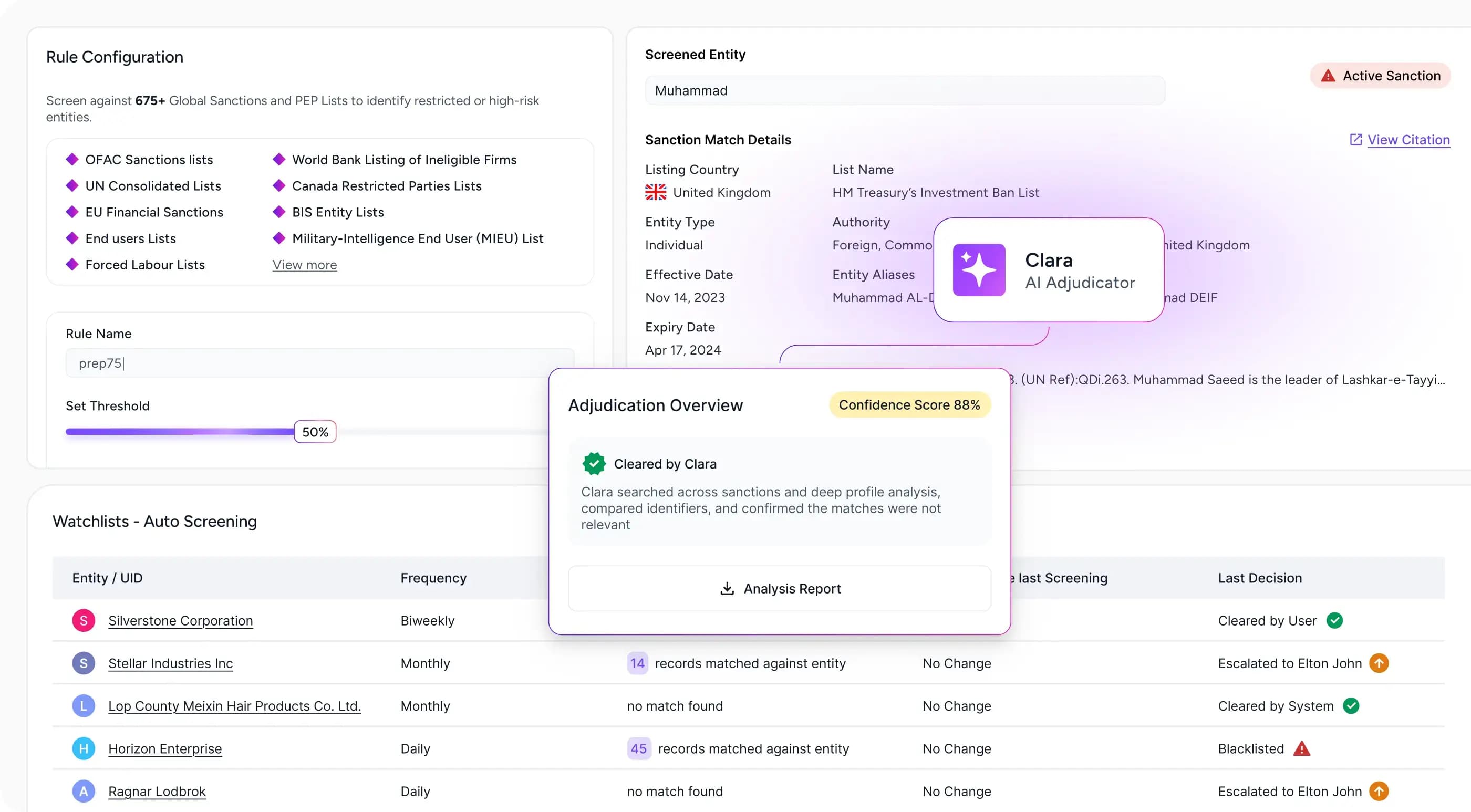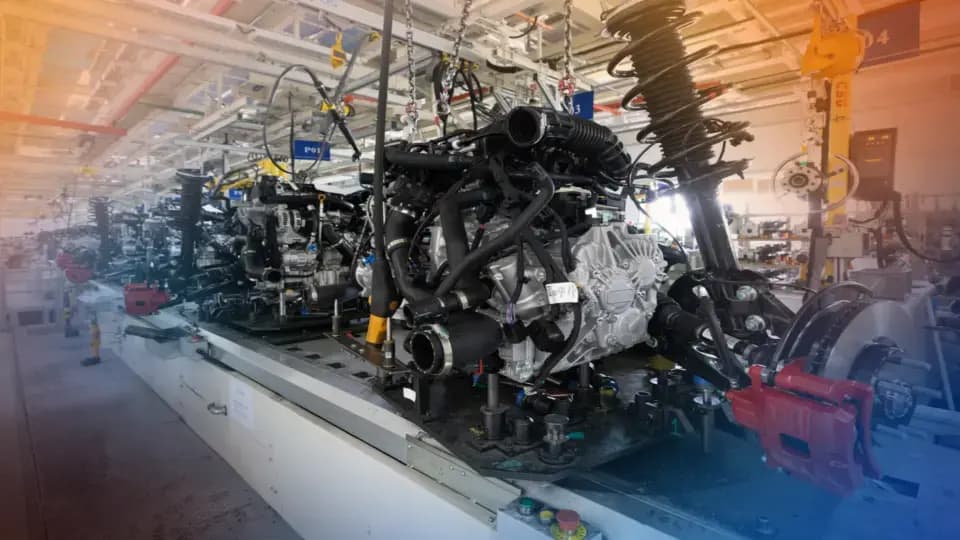Making Global Trade
Intelligent. Resilient. Compliant
Trademo is a single source of truth for global trade that connects billions of trade data points and empowers organizations
TRADEMO INTEL
Find and Analyze Buyers, Suppliers, Markets, and Competitors
A powerful global trade data intelligence platform with granular data and analytics on over 3 billion cross-border shipments for sales, procurement, and research.
Find Buyers and Suppliers
Get a list of importers and exporters based on countries, products, HS codes, and trade volumes.
Access Trade Information
View trade volumes, shipments, trading partners, locations, products, and HS codes of companies.
Analyze Competition
Find and monitor competition with information on buyers, suppliers, products, markets, and volumes.
Discover Global Trade Trends
Find new and alternate markets for sales and procurement with trends based on shipment data.

TRADEMO TRADESCREEN
Digitize Trade Documents. Automate Checks. Approve with Confidence.
TradeScreen digitizes and classifies unstructured data and multi-page, handwritten documents in seconds. It runs 1000+ compliance checks to deliver clear, explainable risk scores instantly.
AI-assisted document processing
Instantly digitize documents. Classify and extract data from Letters of Credit, Bills of Lading, Invoices, Packing Lists, and more. Handle multiple file formats and batch uploads efficiently. Eliminate manual sorting and data entry.
Centralize compliance checks
Run 1000+ screenings in a single workflow. Cover TBML, UCP600/ISBP821, sanctions, AML, goods screening, maritime screening, and entity resolution. Avoid switching between multiple vendors.
Get transparent risk insights
Receive dynamic risk scores for every transaction. Leverage entity profiling, connection analysis, and anomaly detection. Understand each risk with clear explanations of the underlying drivers.
Accelerate approvals
Configure maker–checker workflows and set custom risk thresholds. Get instant email or in-app alerts for low-risk approvals and exceptions. Fast-track routine transactions and flag outliers.

TRADEMO SANCTIONS SCREENER
Screen Entities Against Global Sanctions and PEP Lists
A sanctions screening software to flag restricted and denied parties or politically-exposed persons by conducting checks on stakeholders against 675+ sanctions and PEP lists.
Perform Due Diligence
Identify sanctioned entities by screening against 675 global sanctions lists.
Screen in Bulk
Conduct sanctions checks in bulk to screen thousands of stakeholders for restricted or denied parties.
Monitor Continuously
Ensure continuous compliance with automated daily screening against suppliers and customers.
Stay Alert & Compliant Proactively
Get alerts for updates for sanctions on your searches or watchlists directly into your inbox.
AI-Powered Adjudication
Clara analyzes matches, provides recommendations, and generates audit-ready reasoning.

TRADEMO GLOBAL TRADE COMPLIANCE
Find HS Classification, Tariffs, Duties, Controls, and FTAs
A trade compliance software for the latest and enriched global trade content fetched from government and customs authorities in real-time to ensure compliance with the rapidly changing trade regulations.
Product Classification
Classify products with accurate HS codes for importing in and exporting to over 140 countries.
Find Tariffs, Duties, & Taxes Easily
Leverage latest information on charges applicable to goods including tariffs, duties, preferential rates, and taxes.
Discover Rulings and Controls
Get the latest regulatory controls and rulings applicable to goods including permits, licenses, authority, etc.
License Determination
Find and download documents required for importing or exporting specific goods or HS codes


Start classification for FREE!
Struggling to find the right HS codes for your products? Trademo’s AI-powered HS classifier gives you accurate HS codes instantly. Eliminate guesswork, save hours of manual effort, and enjoy faster classification and smoother customs clearance—all in just a few clicks. Try for free!
*No credit card required
TRADEMO MAP
Gain Multi-Tier Visibility for Forced Labor, Sanctions, and End-Use Compliance
A supply chain mapping tool for compliance built on the most comprehensive network of global trade, sanctions, export controls, forced labor, and ownership data for unmatched visibility into upstream and downstream stakeholders and risks.
View Upstream Suppliers
View upstream suppliers and associated risks in the value chain up to the fourth-tier.
Discover Downstream Buyers
Find buyers and risks in your downstream value chain up to the fourth-tier.
Identify Sanctions & Forced Labor Risks
Screen suppliers till fourth-tier for denied and restricted parties and forced labor entities.
Highlight Export Controls Violators
Find export control violators in your downstream value chain to comply with controls.

Explore Multi Tier Supply Chain Flow
Explore
Explore Transformation Stories
10%
Higher Revenue
“I use the platform every day, all day, and the data has been really useful. I am super positive about the trends, analytics, and contact information provided by Trademo.”
Read Case StudyTrademoKG - Global Trade Knowledge Graph
Billions of data points on ports, buyers, suppliers, products, vessels, sanctions, controls, tariffs, etc are fed into Trademo KG, which along with AI Models powers our products, APIs and data feeds.

Customs Declarations
Shipping Data
Corporate Ownership
Financials
Vessel Data
Forced Labor Data
Controls & ECCN
FTAs & Embargoes
Tariffs & Duties
Shipping Manifest
Sanctions
Container Data


Prospecting in Global Trade
Pricing Intelligence
Competitor Analysis
Product Classification
AML Screening
Multi-Tier Visibility
Sanctions & Export Controls Compliance
Global Trade Compliance
Financial Underwriting
Procurement
Forced Labor Compliance
Market Research
Our latest blog post

Sep 16, 2025global trade management
Chemicals & Pharma Imports: How Tiny Formula Variations Impact HS Classification

Sep 12, 2025global trade management
The Classification Dilemma: Electronics Parts vs. Finished Goods

Sep 11, 2025global trade management
Stitch vs. Fabric: The Hidden HS Code Challenge in Apparel & Footwear

Sep 5, 2025global trade management
HS Code Classification Demystified
APIs
Data License
AI Agents
Solutions
Pricing








































